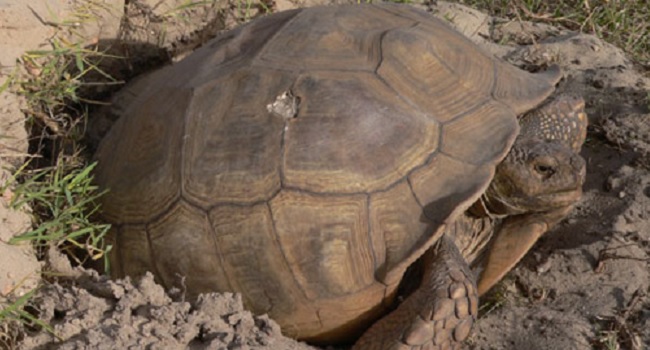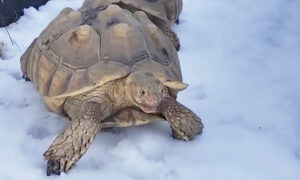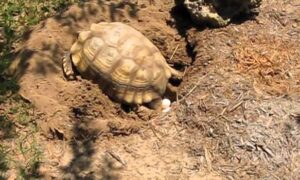Sulcata tortoises native habitat is hot with high rainy seasons. They are native to northern Africa, in the Sahara Desert, and the Sahel semi-arid regions. Sulcatas are also native to Senegal, Sudan, Burkina Faso, Nigeria, Chad, Mauritania, Eritrea, Mali and Ethiopia.
Sulcata Tortoise Native Habitat
The natural habitat of sulcata tortoises is more grassland and tropical than it is desert. A common misconception is that the species is a desert tortoise and should be housed in a dry environment. Over the years, tortoise keepers and breeders have learned that sulcatas are more native to areas that are very hot but the tortoises spend most of their days in high humidity burrows.
Depending on native locations and climates, sulcatas may see more of a tropical-type climate.
Sahara Desert Climate
The climate is dominated by two different climate zones. The northern Sahara is a dry subtropical climate, and the southern Sahara is a dry tropical climate. The dry subtropical climate (the north) has cool to cold winters and hot summers. The dry tropical climate (the south) has mild, dry winters and a hot dry season preceding heavy summer rains.
Sudan Climate
Sudan, where Sudanese sulcata tortoises are native, has a tropical climate. In the desert zones, the summer temperatures exceeding 110-degrees Fahrenheit with little rainfall and frequent dust storms. In other areas of Sudan, rainfall averages about 10-inches during the Mid-June through September.
Senegal Climate
Senegal has a tropical, hot and humid climate. The rainy season is between May and November with a dry season between December and April.
Wild Sulcata Tortoises
Because sulcata tortoises native habitat is such an inhospitable region, they do not typically interact with humans. But, the pet trade puts them in slight danger.
Poachers collect wild sulcata tortoises. Over the years, poachers have drastically depleted wild populations. The wild tortoises that are left are more susceptible to natural hazards and habitat destruction. Animal harvesting from the wild has caused the species to be classified as Vulnerable by the IUCN Red List.





